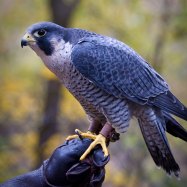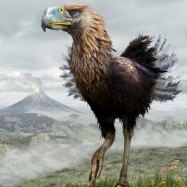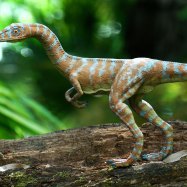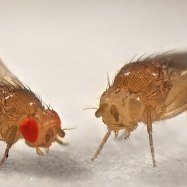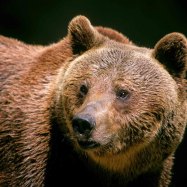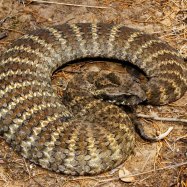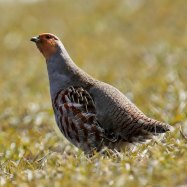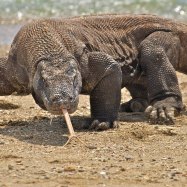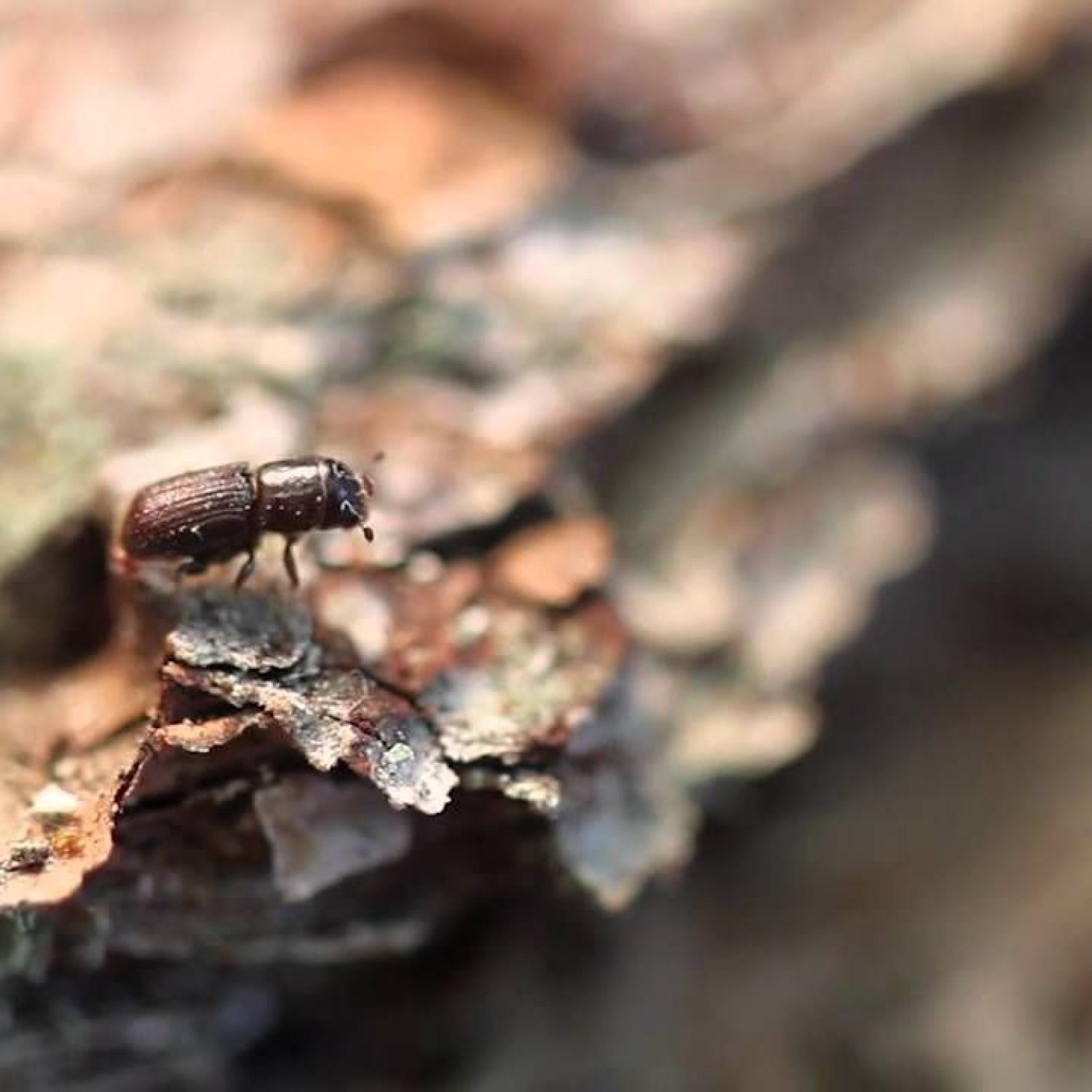
Pine Beetle
3-7 mm
The Pine Beetle, also known as the bark beetle, can measure between 3 to 7 mm in length and is found in the Western United States. Belonging to the Curculionidae family, these tiny cylindrical insects can cause major damage to trees, resulting in widespread forest destruction. Keep an eye out for these destructive pests while exploring the great outdoors. #PineBeetle #BarkBeetle #Curculionidae #ForestDestruction #WesternUS #AnimalFacts.
Animal Details Summary:
Common Name: Pine Beetle
Kingdom: Animalia
Habitat: Coniferous forests
The Destructive Impact of Pine Beetles on North America's Coniferous Forests
The pine beetle, scientifically known as Dendroctonus ponderosae, is a small but destructive insect that has caused widespread damage in North America's coniferous forests. This tiny creature, measuring only 3-7 mm in length, has had a significant impact on the delicate ecosystems of the Western United States, where it is native.From the majestic pine forests of British Columbia to the rugged landscapes of Wyoming, the pine beetle has left a trail of destruction in its wake. And as the climate continues to change, its destructive capabilities only continue to escalate, posing a threat to the very survival of these forests Pine Beetle.
In this article, we will explore the life and behavior of pine beetles, their impact on North America's coniferous forests, and what can be done to mitigate their destructive effects.
A Tiny Insect with a Huge Impact
At first glance, the pine beetle may seem insignificant, almost unnoticeable, with its dark brown to black coloration. But do not be fooled by its size, for this tiny beetle packs a powerful punch when it comes to its destructive capabilities.Belonging to the class Insecta and order Coleoptera, the pine beetle is a species of bark beetles, a group of insects that feed on the inner bark of trees. They get their name from their preferred habitat - the coniferous forests of North America, where they thrive on the barks of pine, spruce, and fir trees.
Life Cycle of Pine Beetles
Pine beetles have a complex life cycle that often relies on environmental cues and climatic conditions. Here is a brief overview of their life cycle:1. Egg Stage: The female pine beetle lays her eggs in the inner bark of the host tree, usually in groups of 2-5.
2 Parrot Snake. Larval Stage: The eggs hatch, and the larvae bore into the outer bark and start feeding on the sapwood layer of the tree.
3. Pupal Stage: Once they have completed their development, the larvae pupate in chambers created in the outer bark.
4. Adult Stage: In early summer, the adult pine beetles emerge from the pupal stage and fly off to find a suitable host tree to lay their eggs.
5. Mating and Hibernation: After mating, the females will hibernate in bark crevices, while males die shortly afterward.
It is worth noting that pine beetles have a relatively short life cycle of only one year. This means that in ideal conditions, the beetle population can exponentially increase, leading to a massive infestation of their host trees in a relatively short period.
The Bark Beetles' Feast
The damage caused by pine beetles is primarily due to their feeding method. As they bore into the inner bark of a tree, their feeding causes the tree's sap to dry up, cutting off the tree's water and nutrient supply. This process is often fatal to the tree, leading to its eventual death.What makes pine beetles even more problematic is their ability to carry and introduce fungi and bacteria into the tree's inner layers. These pathogens can quickly spread through the tree, causing further damage and making it more susceptible to beetle attacks.
The Pine Beetle Epidemic
In recent years, the Western United States has seen a dramatic increase in pine beetle infestations, leading to devastating consequences for the region's coniferous forests. This epidemic is a result of a perfect storm of factors, including favorable climatic conditions and human activities.One of the primary factors contributing to the pine beetle epidemic is the warming climate. As temperatures rise, it creates an optimal environment for the beetle's reproduction and survival. Warmer temperatures also allow the beetles to reproduce and complete their life cycle quicker, leading to a quicker build-up of their population.
Furthermore, drought conditions resulting from climate change weaken the defense mechanisms of trees, making them more vulnerable to beetle attacks. Also, as coniferous forests become denser due to years of fire suppression, it creates an ideal environment for beetles to spread rapidly.
Despite these natural factors, human activities such as logging and land development have also played a crucial role in the pine beetle epidemic. As humans continue to encroach on the beetle's natural habitat, it creates a path for them to spread to new areas, leading to the infestation of previously healthy forests.
Consequences of the Pine Beetle Epidemic
The pine beetle epidemic has had disastrous consequences for North America's coniferous forests, from economic losses to severe environmental impacts. Some of the major consequences of this epidemic are:Reduced Tree Supply and Economic Losses
As pine beetles continue to feast on the trees, it leads to a significant reduction in the tree population, resulting in a reduced timber supply. This not only has a significant impact on the timber industry but also affects other sectors, such as recreational activities like camping and hiking, which rely on healthy forests.Increased Risk of Wildfires
Pine beetles contribute to the spread of wildfires in several ways. Firstly, due to their feeding method, they weaken trees, making them more susceptible to catching fire. Secondly, as more trees die from beetle infestations, it creates a large amount of dry and dead trees, providing ample fuel for the wildfires to spread quickly.Carbon Emissions and Climate Impact
With the death and decay of millions of trees, the pine beetle epidemic has had a significant impact on the environment. Dead trees release large amounts of carbon dioxide into the atmosphere, significantly contributing to greenhouse gas emissions. This cycle of carbon emissions further exacerbates climate change, creating a vicious cycle.Mitigating the Destructive Effects of Pine Beetles
The pine beetle epidemic may seem like an insurmountable problem, but efforts are being made to mitigate its destructive effects. Some of the techniques being used include:Thinning and Salvage Logging
One of the most common methods used to combat the pine beetle infestation is thinning and salvage logging. This involves removing infested trees and thinning out diseased and weakened trees, making the forest less favorable for beetle populations to thrive.However, this method has its challenges, as it can potentially harm healthy trees and disrupt the natural ecosystem dynamics of the forests.
Biological Control
Another approach to mitigating the pine beetle epidemic is using biological control methods. This involves introducing natural predators of the pine beetle, such as wasps and parasitic flies, to limit the beetle population. This method has shown promising results in some areas, but it is not a foolproof solution as it can also harm other beneficial insects.Managing Climate Change
Perhaps the most crucial and long-term solution to combatting the pine beetle epidemic is addressing its root cause - climate change. By reducing carbon emissions and adopting sustainable practices, we can potentially slow down the warming of our planet and create a less favorable environment for the pine beetle to thrive.In Conclusion
The pine beetle, with its diminutive size, has had a devastating impact on North America's coniferous forests. Its destructive capabilities have resulted in economic losses, environmental damage, and an increased risk of wildfires. As the climate continues to change, it is essential to take immediate action to mitigate the pine beetle epidemic.Through a combination of techniques such as thinning and salvage logging, biological control, and addressing climate change, we can work towards preserving our forests and protecting them from the destructive impacts of pine beetles. Let us strive towards creating a harmonious balance between humans and nature, ensuring the survival of these vital ecosystems for future generations.

Pine Beetle
Animal Details Pine Beetle - Scientific Name: Dendroctonus ponderosae
- Category: Animals P
- Scientific Name: Dendroctonus ponderosae
- Common Name: Pine Beetle
- Kingdom: Animalia
- Phylum: Arthropoda
- Class: Insecta
- Order: Coleoptera
- Family: Curculionidae
- Habitat: Coniferous forests
- Feeding Method: Bark
- Geographical Distribution: North America
- Country of Origin: United States
- Location: Western United States
- Animal Coloration: Dark brown to black
- Body Shape: Cylindrical
- Length: 3-7 mm
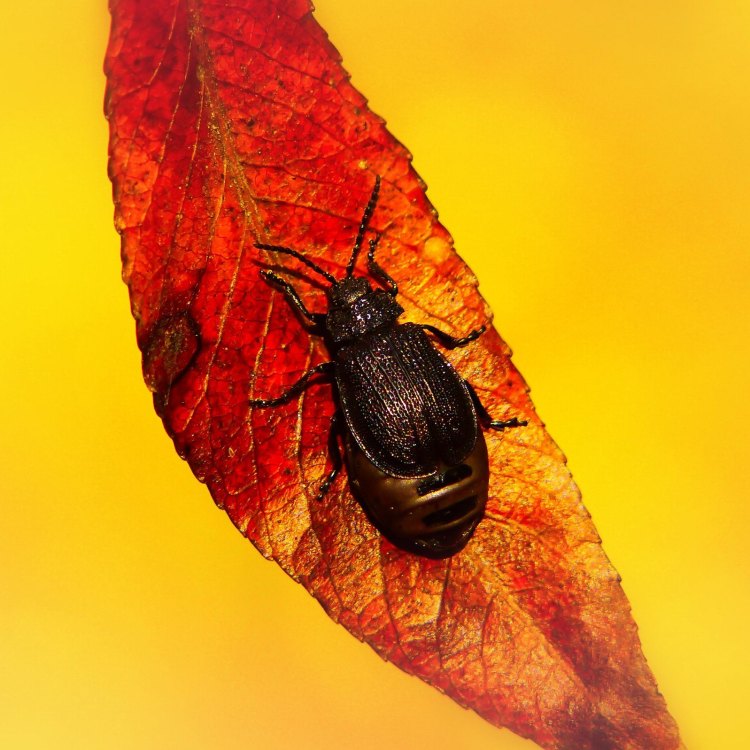
Pine Beetle
- Adult Size: 3-4 mm
- Average Lifespan: 1-2 years
- Reproduction: Through eggs
- Reproductive Behavior: Mating occurs inside galleries
- Sound or Call: No sound or call
- Migration Pattern: No migration
- Social Groups: Colonies
- Behavior: Aggressive
- Threats: Destruction of forests
- Conservation Status: Not evaluated
- Impact on Ecosystem: Can cause widespread tree mortality
- Human Use: Used in wood industries
- Distinctive Features: White pitch tubes on tree bark
- Interesting Facts: Pine beetles play an important role in forest ecology by attacking weak or old trees and allowing space for new growth
- Predator: Woodpeckers, parasitic wasps
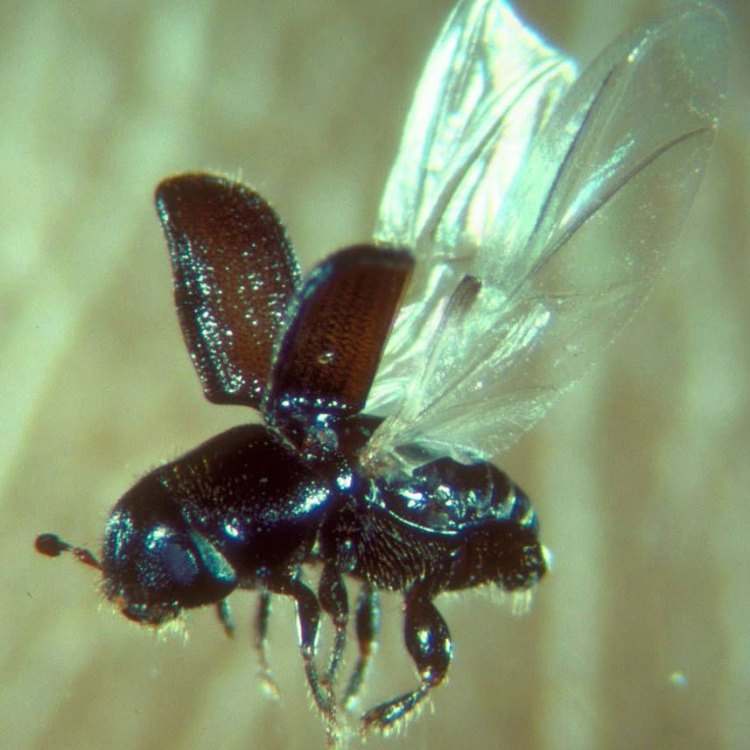
Dendroctonus ponderosae
The Mysterious Pine Beetle: A Tiny Insect with a Big Impact
The forest is a vital and intricate ecosystem, with each species playing a unique role in maintaining its balance. While the most prominent creatures may come to mind, such as bears, deer, and birds, a tiny insect known as the pine beetle also holds a significant place in maintaining the health of forests. Despite measuring only 3-4 millimeters in size, the pine beetle's impact on the ecosystem is immense.In this article, we will delve deeper into the world of the pine beetle, exploring its life cycle, behavior, and the important role it plays in the forest PeaceOfAnimals.Com. We will also uncover how this seemingly insignificant insect can pose a threat to forests and how humans have utilized it for their own purposes.
The Life of a Pine Beetle
The pine beetle, also known as the mountain pine beetle, is a small insect that belongs to the family Curculionidae, commonly known as weevils. It primarily feeds on the inner bark of various pine trees, including lodgepole, ponderosa, and limber pines. The adult pine beetle measures only 3-4 millimeters in length, making it almost invisible to the naked eye. However, its small size does not hinder its ability to cause damage.
Like many other insects, the pine beetle has a relatively short lifespan, averaging about 1-2 years. During this time, the beetle goes through four stages of its life cycle - egg, larva, pupa, and adult. The female pine beetle lays her eggs inside the inner bark of a tree, forming a gallery or tunnel. These galleries can be easily identified by the white pitch tubes on the surface of the tree bark, a distinctive feature of pine beetle infestation Pygmy Rattlesnake.
Once the larvae hatch, they feed on the inner bark of the tree, eventually causing it to die. The larvae then become pupae and transform into adult beetles, emerging from the tree to mate and start the cycle all over again. This reproductive behavior of mating inside galleries ensures the survival of the species, as it protects them from predators and harsh environmental conditions.
Aggressive Behavior and Social Groups
Despite their small size, pine beetles have a reputation for their aggressive behavior. They primarily attack weak, old, or stressed trees, drilling through the bark and creating galleries to lay their eggs. In this way, they play an important role in the forest by removing unhealthy or dying trees that could potentially spread disease to other trees.
Pine beetles also exhibit social behavior by living in colonies. This behavior is beneficial for their survival, as they can share resources, such as food and shelter, and protect each other from predators. It also allows them to rapidly infest an area and multiply quickly, causing widespread damage.
Threats and Impact on the Ecosystem
While the pine beetle's behavior may seem beneficial to the forest, it can also pose a significant threat. As they attack and kill trees, they can cause widespread tree mortality, especially when a large number of beetles infest an area. This can have a severe impact on the ecosystem, affecting the food chain, damaging the habitat, and reducing biodiversity.
Moreover, as the dead trees start to decompose, they release carbon into the atmosphere, contributing to climate change. The loss of trees also means a decrease in the amount of carbon they absorb through photosynthesis, further exacerbating the issue.
The Pine Beetle and Human Use
Despite the potential devastation caused by pine beetles, humans have found a way to utilize their impact for their own purposes. Pine trees that have been killed by beetles are still usable for wood industries such as the production of furniture, construction materials, and paper.
In recent years, there has been an increase in the use of beetle-killed wood, also known as "blue stain wood," as a sustainable and eco-friendly alternative to traditional lumber. It has a unique blue-grey coloring due to a fungus carried by the beetles, making it visually appealing. This has helped to reduce the amount of live trees harvested for wood industries, minimizing the impact on the environment.
Predators and Interesting Facts
Like all species, pine beetles also have predators. Woodpeckers, with their sharp beaks, can easily detect and extract pine beetle larvae from their galleries. Parasitic wasps also play a role in controlling pine beetle populations by laying their eggs inside the galleries, which hatch and feed on the beetle larvae.
Aside from their important role in the ecosystem and their impact on human activities, pine beetles have some intriguing facts. As mentioned earlier, they form distinctive white pitch tubes on the tree bark, but these tubes also serve as a warning to other beetles not to colonize that particular tree. This natural defense mechanism helps prevent overcrowding and potential competition for resources.
Another fascinating fact is that pine beetles can carry a fungal pathogen known as blue stain fungus. This fungus can block the tree's nutrient supply, further contributing to its death. However, pine beetles have adapted to this fungus and can detoxify it, allowing them to thrive.
Conclusion: Small But Mighty
In conclusion, the pine beetle may be small in size, but its impact on the forest is mighty. From its aggressive behavior to its social groups, and even its distinctive features, the pine beetle plays a significant role in maintaining the balance of the ecosystem. While it can pose a threat to forests, humans have also found a way to use its impact to their advantage. With its unique color and adaptability, the pine beetle continues to intrigue scientists and forestry experts, highlighting the complexity and importance of the natural world.
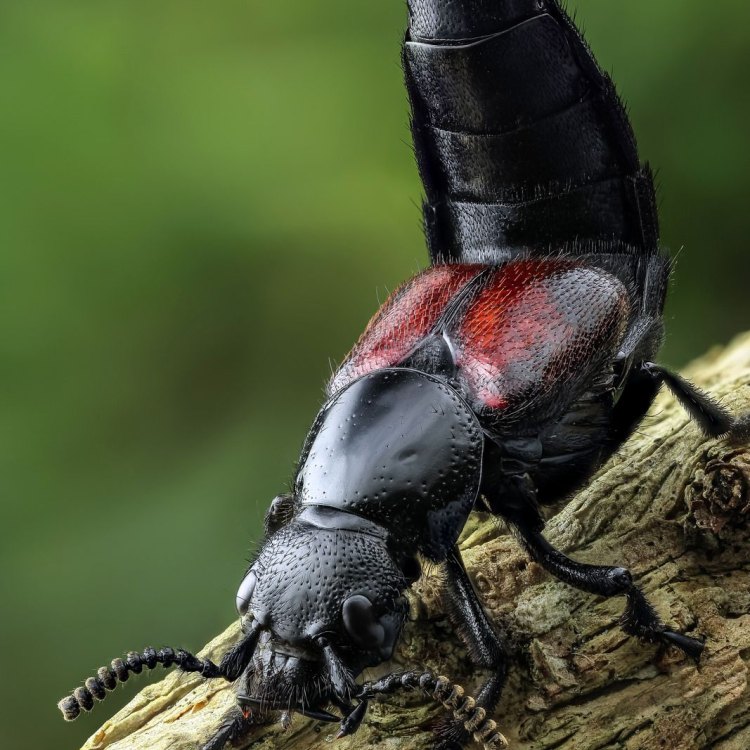
The Destructive Impact of Pine Beetles on North America's Coniferous Forests
Disclaimer: The content provided is for informational purposes only. We cannot guarantee the accuracy of the information on this page 100%. All information provided here may change without prior notice.


